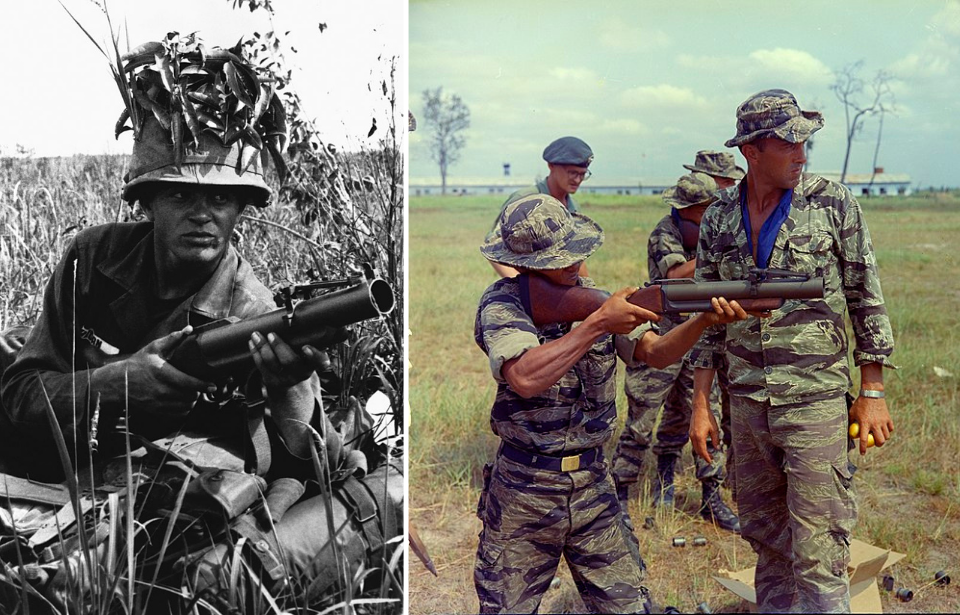The M79 grenade launcher was known by many names, including the “Thumper-Gun” and the “Bloop Tube” – Australians even called it the “Wombat Gun.” Resembling a shotgun, it was used by US troops serving in Vietnam during the 1960s. While it had its positives, its drawbacks eventually led to it being replaced by the M203.
Project NIBLICK and the development of the M79 Grenade Launcher
The M79 was developed during Project NIBLICK, the US Army’s attempt to increase an infantryman’s firepower by using an explosive projectile that was more portable than a mortar and had more range than rifle grenades. It was also important the new weapon be accurate when fired.
The project produced a 40 x 46 mm grenade. However, those involved were unable to develop a launcher that could fire more than a single round.
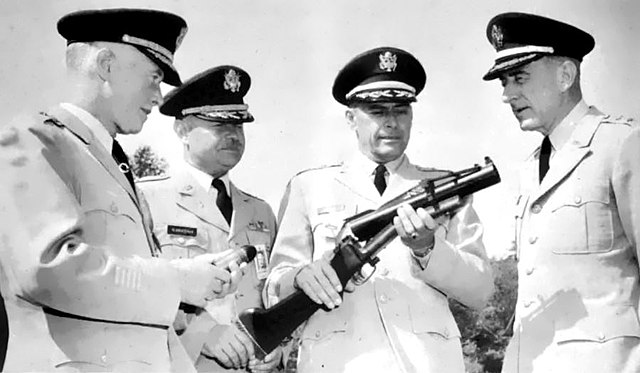
In the end, the decision was made to go with a single-shot, break-open, shoulder-fired weapon by Springfield Armory: the S-3. Developed between 1953 and 1960, it was later refined into the S-5. The company had made one other design, the three-shot “harmonica” T148 grenade launcher. However, it was unable to fix the issues that arose.
The S-5 was renamed the XM79, and after being given a new sight was dubbed the M79. It was officially adopted by the Army on December 15, 1960.
The M79’s specs
The M79 grenade launcher was produced in the US between 1961 and 1971, during which time 350,000 were built. It had a simple design comprised of five parts: the receiver group; the fore-end assembly, which bed the barrel to the receiver; the barrel group; the sight assembly; and the stock, made from either wood or fiberglass. It was 73.1 CM long, with the barrel measuring 36.83 CM.
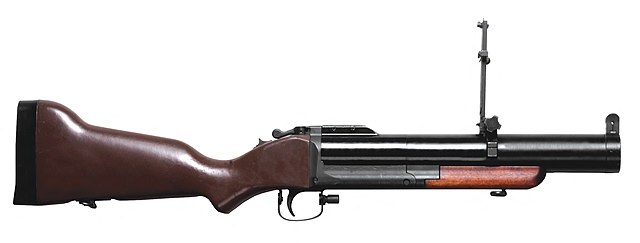
When empty, the weapon weighed 2.7 kilograms, and when loaded was 2.93 kilograms. To load, the operator – known as the grenadier – would treat it like a shotgun, loading the round near the center. It had two sights. The front was a fixed blade, while the rear could fold and be adjusted for ranges between 75 and 375 meters.
The M79 grenade launcher had a “high-low” propulsion system that greatly reduced recoil and increased its range. It was most effective when fired from around 350 meters and had a maximum range of 400 meters.
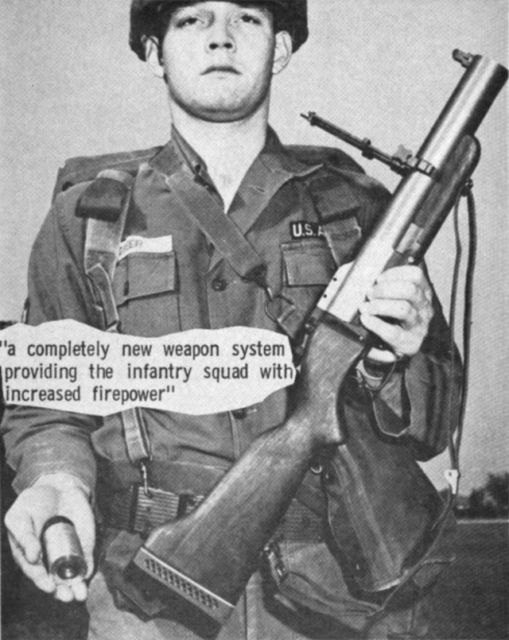
The M79 grenade launcher could fire a host of rounds, including anti-personnel, buckshot, illumination, flechette, and smoke. Among the most effective was the M406 40 mm HE grenade, which fired at a velocity of 75 meters per second. While it didn’t have enough energy to kill a target, it could penetrate the abdomen and cause a hematoma.
Two rounds were specifically developed for the launcher. The first was the flechette, which fired 45 10-grain steel flechettes at a target. It proved to be ineffective, as it would hit sideways – not point-first – and simply bounce off. The second was the M576 buckshot, which contained 24-grain metal pellets and was incredibly lethal at close range. However, it drastically lost its effectiveness the farther the grenadier was from their target.
Use of the M79 grenade launcher in Vietnam
The first useable M79 grenade launchers were delivered to the Army in 1961 and saw use during the Vietnam War. Their reliability, ease of use, firepower, and the fact they bridged the gap between the ranges of hand grenades and mortars made them popular with troops, who called them “the platoon’s leader’s artillery.”
They could also be used for indirect fire by placing the butt-stock on the ground and firing them like a mortar.
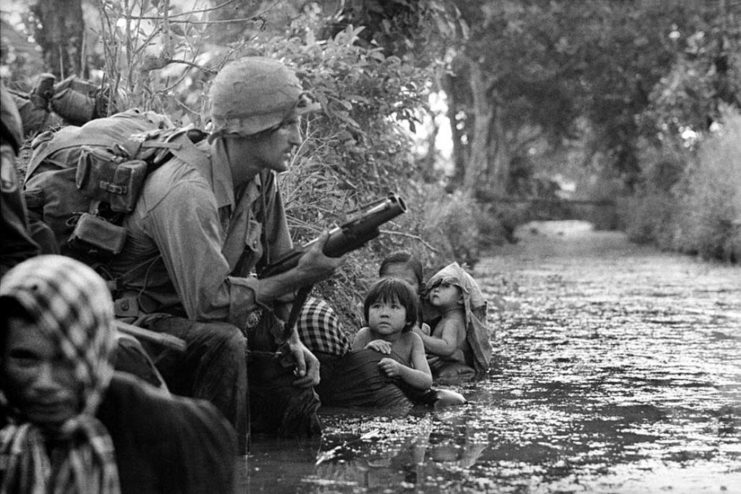
The M79 was assigned to combat units, including the 101st Airborne Division, the 1st Cavalry Division, the 173rd Airborne Brigade and the 1st Infantry Division, and given to grenadiers in Marine and Army rifle squads. Infantry units also used them with success, inflicting destruction on Viet Cong bunkers.
The M79’s drawbacks
While favored by some US soldiers in Vietnam, the M79 grenade launcher had its drawbacks. It could only fire one round at a time, meaning its user needed to constantly reload the weapon. This made for a slow rate of fire, which was not conducive in a firefight. As such, the Navy developed the China Lake grenade launcher for its SEAL teams.
The second issue was the rounds needed to travel 40 meters to arm. While intended to be a safety feature, having such a distance between soldiers and the enemy wasn’t always possible. This meant most troops carried a secondary weapon, either a sidearm or an M16 rifle. However, it wasn’t always possible to carry the latter, given the M79’s large size.
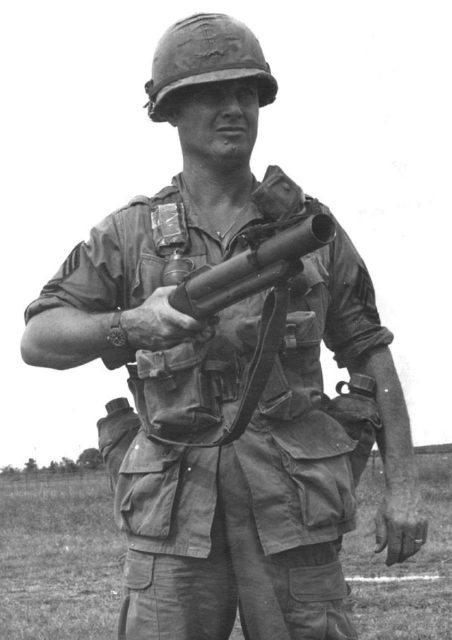
Due to its drawbacks, the M79 was replaced by both the XM148 and the M203, which were underbarrel grenade launchers. While the XM148 was discontinued due to issues that plagued its design, the M203 was a success and became standardized. By the end of the war, it had replaced the M79. Although, the launcher was still in service with National Guard and Reserve units.
Use of the M79 grenade launcher following Vietnam
Aside from Vietnam, the M79 grenade launcher has been used in a number of conflicts, including the civil wars in Cambodia, Laos, Bougainville, and Syria; the Communist insurgency in Malaysia; the Falklands, Lebanese and Salvadoran wars; and clashes in Burma and along the border between Thailand and Cambodia.
It was also used during the wars in Iraq and Afghanistan. During Operation Iraqi Freedom, it was the go-to for clearing IEDs from a distance. It was also favored by Navy SEALS and Special Forces, as its range and accuracy is slightly better than the M203.
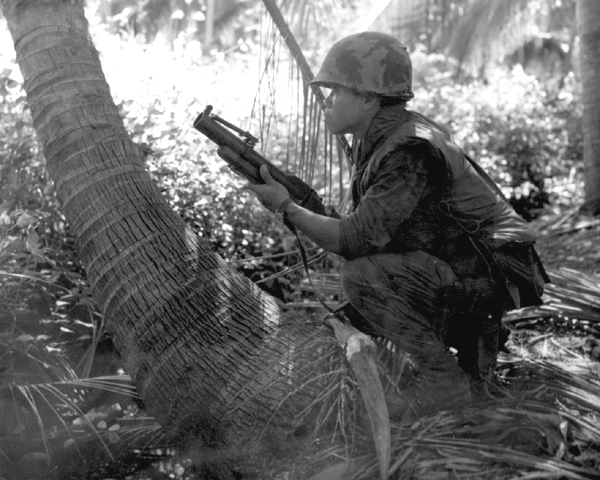
The M79 has also been used for non-lethal purposes in recent years, such as crowd control. Police forces use three rounds: the M1006 sponge grenade, the M651 CS gas round and the M1029 Crowd Dispersal round. The aim is to disperse large crowds before violence occurs, as opposed to stopping an enemy in their tracks.
